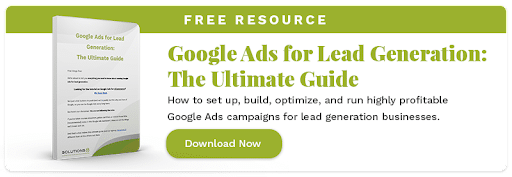Today we are going to take a look at something we don’t often do. Lead gen!
Our Wonderman at Solutions 8, John Moran has some handy tips for you!
To a certain extent, it is a simple campaign since all we do is develop leads from a user to a client. The simplicity comes from the fact we are not allocating any specific budget toward any specific products, nor is there a specific audience that needs to be focused on.
As a campaign, however, lead generation can be a little needier, requiring more hand-holding and training by us to the client. There is the added complexity of what needs to be done post-lead generation. Unlike eCommerce, the lead generation process doesn’t stop once a user carries out the final action on a website.
Users fill out form submissions, which a sales team must then use to contact the individual. Following that, the sales team must record whether or not they were able to make the sale. Not only is this process logistically more complicated, but measurement can become foggy.
When there’s trouble in the process, you are looking beyond your website and have to look into your sales process. Is your lead quality poor? Is the team not able to close? These are not typical questions to ask in a DTC.
Predominantly concentrating on Search and YouTube campaigns, managing a lead gen client has one vital prerequisite to guaranteeing a successful relationship between Solutions 8 and the client.
Listen up, folks! This here is important!
The number one prerequisite for a successful lead gen campaign is the quality of a client’s sales team and its ability to communicate effectively with each other. You can have the best website, ads, and form, but if your sales team does not communicate well, the system will have kinks.

The sales team needs to know where leads are coming from and understand the common reasons leads don’t convert. Process consistency is also one of the most important items. If different sales staff use different procedures, it can make running a lead generation campaign a nightmare. Consistency makes lead generation easier to quantify and determine the best campaign optimizations.
If the sales team does not have this step-by-step connection to all components of the team, then it will fail outright with no clear idea of where it went wrong.
A great team is a lifeline to feedback on what’s going on within the campaign.
Let’s say that leads can come to a sales team in one of two ways
- Form submission
- Phone call
For both methods, multiple team members will manage the inquiries of all potential leads. Based on the quality of the items’ submissions above, they will filter irrelevant leads. If team members don’t use consistent language toward the qualification of leads or the same process, the process begins to unwind.
If one team member uses paper to track lead quality, while the other uses Excel, they may begin to lose track of whom they have and haven’t contacted.

Even with a more realistic example, if one team member goes on vacation and receives an Excel sheet full of the classification of leads they don’t understand, it’s easy to get lost. Do we need to follow up with the person who called? Is that form submission spam? Beyond that, what does the digital marketer do when this process is broken? If the sales team is inconsistent, it can make them look like they are producing poor leads, when in reality, it is the sales team’s processes that may need improving.
We’ve got a great example for you.
Let’s take a look at a client with a moderate budget, with an ad spend of $7,000 a month. The account has been up and running with Solutions 8 for quite some time. As John Moran clarifies, he’s been managing the account since 2020.
If we study the 2022 metrics for our client, conversions have only been tracked since September. It’s clear to see that we got 275 leads for $44,000.

Now, there are more conversions that weren’t being tracked for about a year. And that’s because everything had been managed in HubSpot prior to this. Consistent leads are still coming in now on an average of 6 to 7 per day. They are considered consistent because through HubSpot one can identify good conversions.
Looking at all the dashboards, it is possible to pick out the sources that created the leads. These sources include paid search, paid social, offline sources, organic search, direct traffic, organic social, and referrals.
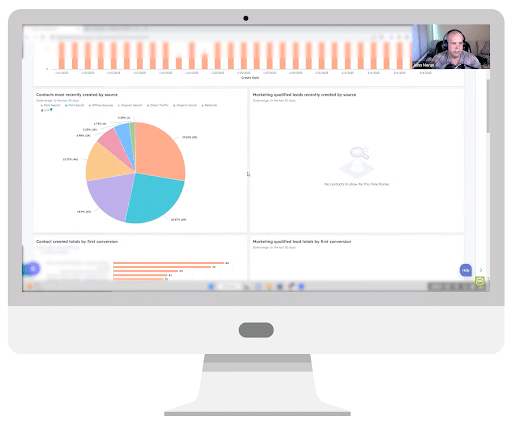
“Not all leads can be attributed to me,” says John, quite humbly, we might add. That’s fine and necessary for me to do my job correctly.”
By using the ads section of marketing and thanks to an exceptional team that knows how to communicate well, we can see 83 leads at $85 each, which looks like this over the last thirty days. 109 conversions. Some conversions are missing.
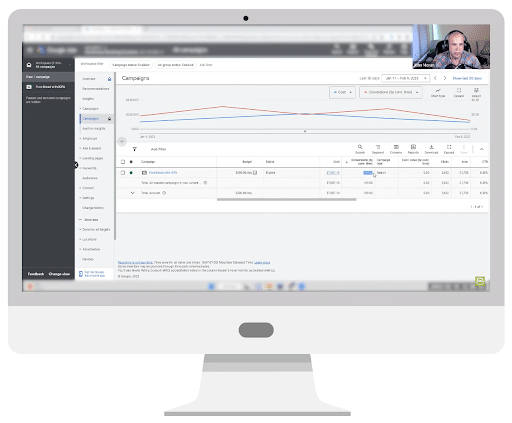
With increasing privacy policy concerns across the web, the options for users to opt out of tracking have become more prevalent and we as advertisers have noticed the impact it has had on attribution. Because of this, we know that our campaigns are likely responsible for a larger percentage of conversions but settle with the fact that not all can be measured.
So, we made $121,000 out of $7,000 in a month out of one month, and there will be more deals attributed to this month. But we need to understand the sales cycle and what is the appropriate time to measure.
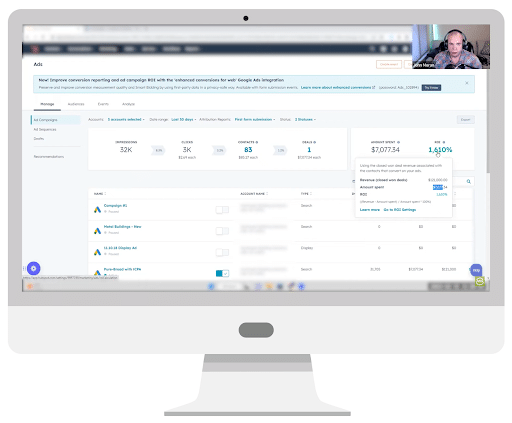
“ROAS was good at 1600% last month, that’s $7,000 for one deal, whereas last year it was at $3,000 per deal because it takes a while to close a deal. That’s how we track it. A $60 deal with 16 deals closed at $3,000. I spent $48,000 at 4800% ROAS earning $2,300,000.
This is far more valuable than Google Ads. They might tell me a lead came in but they’re not going to tell us where it’s coming from, its quality, did it close, who is responsive, or what search terms they are using.
Whether we learn it through the sales team, the CRM, or Google Ads, we can use this information for future bids. We can see that while one campaign may generate a significantly lower volume of leads from the others, the leads that it does generate bring in more revenue for your client. This makes you go against your initial instinct to bid toward lead volume and use ROAS (if possible) as your guiding light in a lead generation campaign.
Analyzing the keywords, which are very straightforward for this client, has led us to make $88,000 out of just $100 last month, which means we are more than fine with bidding on these keywords. Half of these are junk, but we’re tracking the actual result. The question is should we be relying on Google Ads?
It is possible to manage a lead generation campaign without heavily relying on Google Ads. It can be done outside the platform and is secondary to the campaign itself.
When you find out what is working and what is not, our contribution to this company has been primarily in HubSpot. We’ve built up their workflow which is not necessarily our role but the organic lead routing with if/then branches come from Solutions 8.
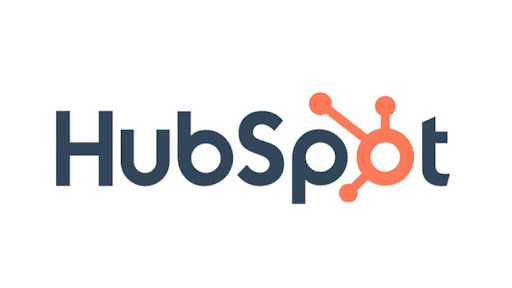
We’ve used HubSpot’s workflows to find harmony across the user journey and identify where leads for this business are coming from. In turn, we are able to come back and determine our ROI but more importantly, we allow this business to operate more efficiently.
“I’m helping them with their sales team,” says John Moran.
And there you have it! That is the number one prerequisite for successful Lead Gen campaigns!
Follow us! If you’re eager for more on lead gen, watch this video now which explains the importance of CRM tools for Lead Generation!
Author
Jani is a copywriter at Solutions 8 with a passion for short stories, dancing under the stars, and 80s pop music. Her soul’s purpose is to turn herself into a masterpiece. Her future is filled with green fields, flowers, sunshine, and poetry.
 Jani Kahukiwa
Jani Kahukiwa